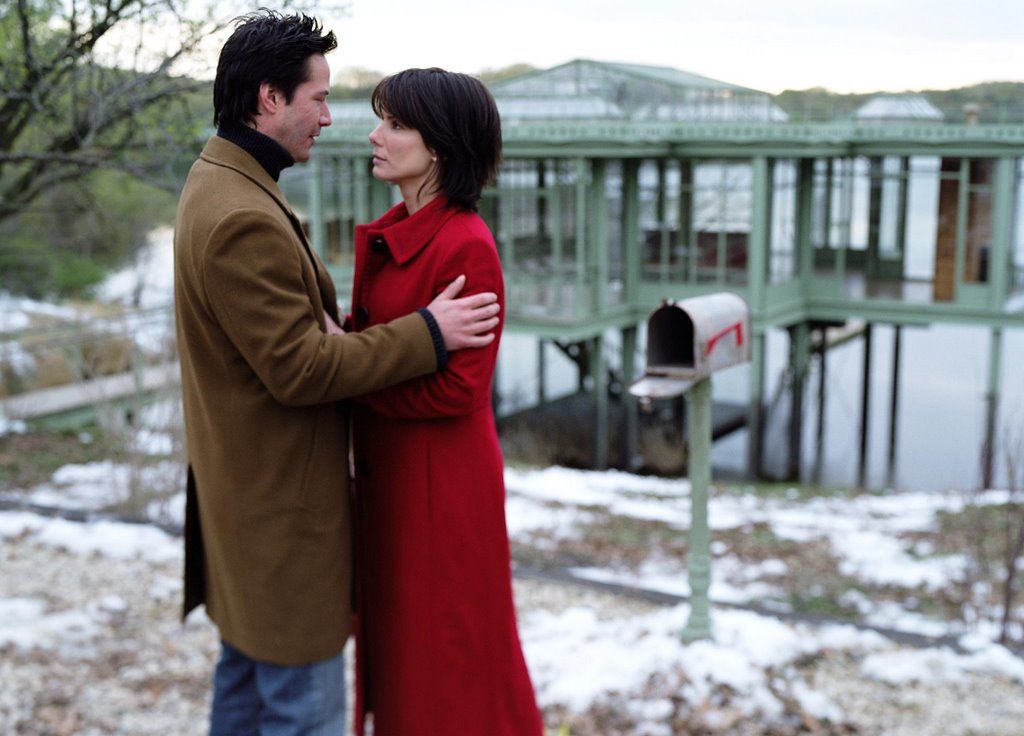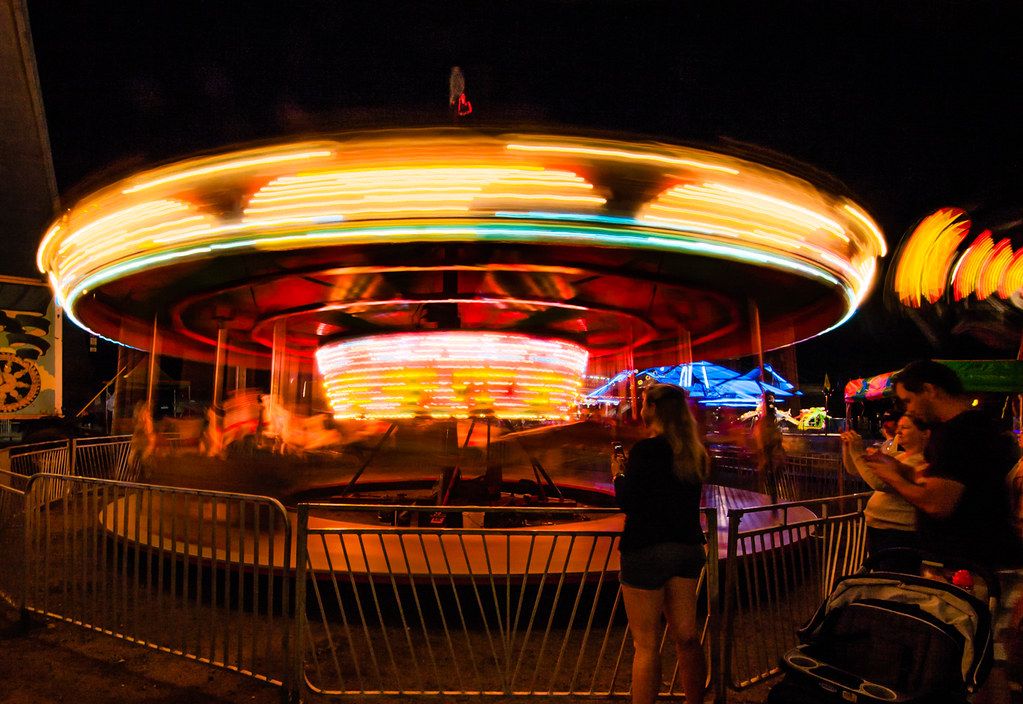
The world of filmmaking is a fascinating blend of meticulous planning and spontaneous brilliance. While scripts are the foundational blueprints that guide stories and characters, there are those electrifying, unscripted moments when actors, fueled by intuition and a deep understanding of their roles, transcend the written word. These instances of improvisation don’t just add a touch of realism; they often become the very heart and soul of a scene, cementing their place in cinematic history.
Indeed, improvisation is a powerful testament to the artistry of performance, showcasing an actor’s ability to adapt, react, and infuse their character with an unexpected authenticity. It’s in this beautiful ‘organised chaos’ that true magic can often be found, elevating scenes from mere dialogue to unforgettable emotional experiences. From a simple flourish that defines an entire persona to a deeply poignant speech that resonates with millions, these unscripted gems demonstrate that sometimes, the most memorable lines and actions are those that weren’t dreamed up in a writer’s room at all.
This article delves into some of the most remarkable improvised scenes in film history, exploring how these unplanned flashes of genius not only enriched their respective movies but also left an indelible mark on popular culture. We’ll uncover the stories behind these spontaneous moments, celebrating the actors and directors who embraced the unexpected to create cinematic gold. Join us as we explore the pure, unscripted magic that proves sometimes, chemistry truly is spontaneous.

1. **”You talkin’ to me?” – Taxi Driver (Robert De Niro, 1976)**This iconic line, now firmly lodged in the public consciousness, wasn’t born from a meticulously crafted screenplay but from the brilliant spontaneity of Robert De Niro. During the final week of shooting Martin Scorsese’s 1976 masterpiece, “Taxi Driver,” a crucial scene required Travis Bickle to rehearse a confrontation in front of a mirror with his concealed gun. The script was surprisingly sparse for this moment, merely stating that Travis “talks to himself in the mirror,” leaving the actual dialogue unwritten.
Scorsese, under time pressure but keen for Bickle to speak, entrusted De Niro with the task of improvising. What unfolded was a pure “jazz riff,” as Scorsese later described it. Locked in a room, De Niro began repeating the now-legendary phrase, “You talkin’ to me?” over and over. Scorsese recognized the raw power and character-defining nature of the repetition, even begging for “another minute” when an assistant tried to rush them, sensing something truly special was emerging.
De Niro’s ad-lib not only gave Travis Bickle an instantly recognizable catchphrase but also profoundly deepened the character’s disturbed psyche. It revealed Bickle’s isolation, his growing delusion, and his aggressive internal monologue, perfectly capturing the essence of an angry individual rehearsing for an imagined confrontation. This unscripted moment powerfully cemented Bickle’s descent into a volatile, self-appointed vigilante, proving that sometimes, the most profound character insights come from the actor’s immediate connection to their role, unburdened by predetermined words.
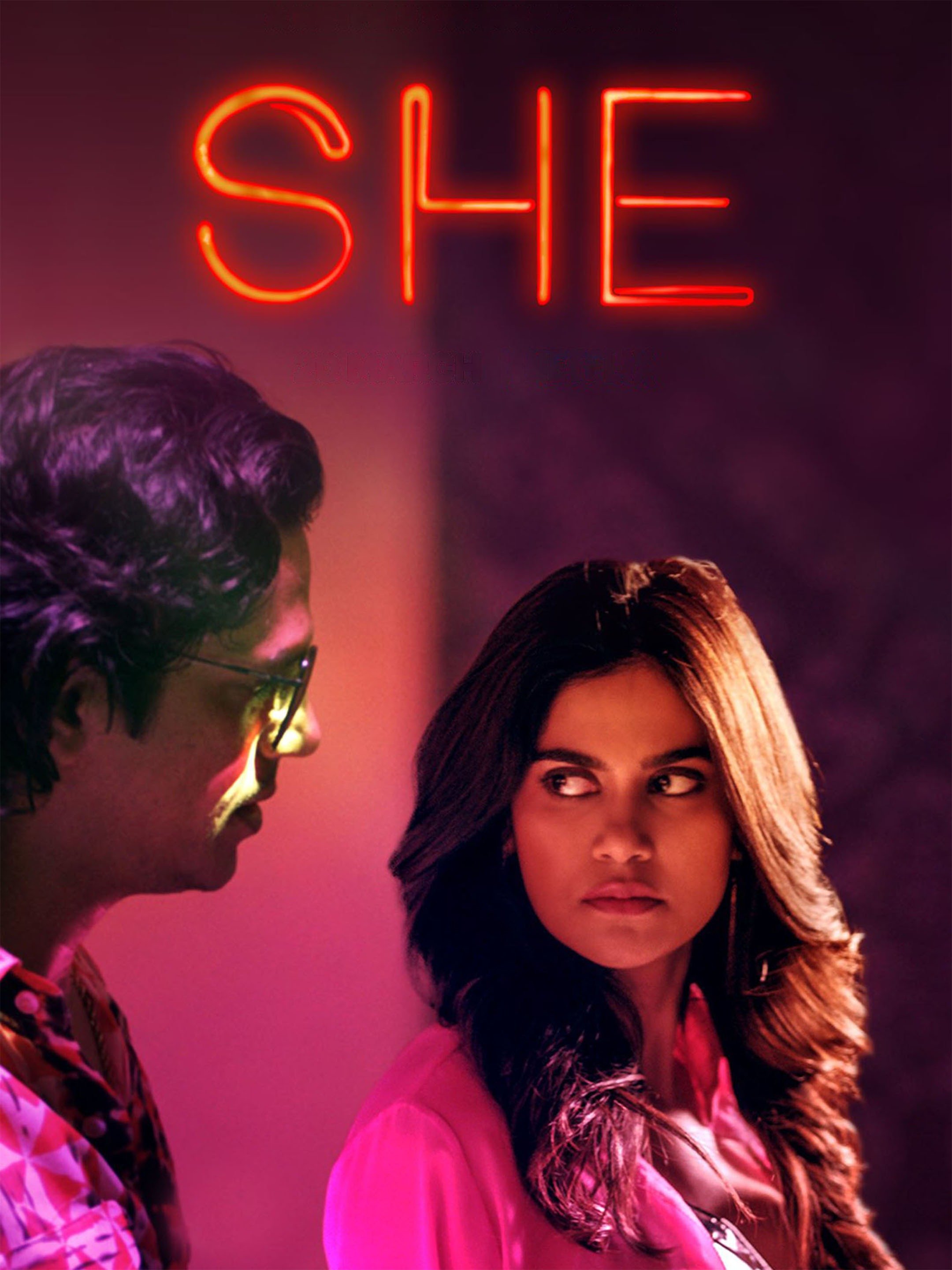
2. **”She used to fart in her sleep” – Good Will Hunting (Robin Williams, 1997)**Robin Williams’ performance as Dr. Sean Maguire in “Good Will Hunting” is widely celebrated as one of his most affecting and critically acclaimed roles, earning him an Academy Award for Best Supporting Actor. A significant portion of the material that sealed this Oscar win, particularly in a pivotal therapy session with Will Hunting (Matt Damon), was, astonishingly, not in Matt Damon and Ben Affleck’s Oscar-winning script. This scene perfectly exemplifies Williams’ legendary ability to improvise with both humor and profound emotional depth.
The setup for this powerful exchange sees Maguire discussing his late wife. When the guarded Will Hunting begins to inquire about her, Williams veers entirely from the script. He launches into an extended, deeply personal, yet hilariously absurd anecdote about the small, intimate details he remembered most about his wife—specifically, how “she used to fart in her sleep.” This unexpected turn instantly cracks both Williams and Damon, whose laughter in the scene is 100 percent genuine, a testament to the spontaneous magic unfolding.
As Williams continued his heartwarming tale, recounting how his wife once farted so loudly she woke the dog, Damon’s laughter became so uncontrollable that he visibly leaned out of focus, and even the camera operator couldn’t stifle their giggles, causing the camera to lightly shake. What makes this improvisation truly extraordinary is how Williams, amidst the unscripted humor, masterfully tied it back to a profoundly poignant finish, demonstrating his unparalleled skill in maintaining character integrity even while creating dialogue on the fly, adding an unparalleled layer of humanity and relatability to Maguire’s character and his bond with Will.
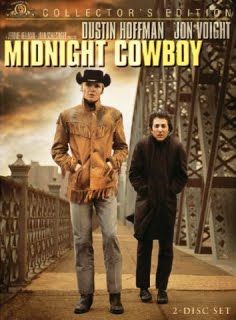
3. **”I’m walkin’ here” – Midnight Cowboy (Dustin Hoffman, 1969)**The phrase “I’m walkin’ here!” delivered with a distinct, cartoonishly exaggerated New York accent, has become synonymous with urban frustration and an iconic piece of cinematic history, thanks to Dustin Hoffman’s unforgettable improvisation in John Schlesinger’s “Midnight Cowboy.” This line is frequently referenced and parodied, yet its origin lies in a moment of genuine, unscripted chaos during filming.
The scene features Hoffman’s character, Ratso Rizzo, and Jon Voight’s Joe Buck navigating a bustling New York intersection. According to Hoffman, a yellow taxicab unexpectedly screeched into frame, almost striking them. Hoffman’s immediate, visceral reaction – banging on the bonnet and yelling, “Hey! I’m walkin’ here!” – was entirely improvised. This wasn’t a pre-planned stunt; it was an authentic, in-character response to a real-life near-accident.
The film’s low budget meant they couldn’t afford to close down Sixth Avenue, forcing the crew to shoot amidst real New Yorkers. Hoffman revealed that his initial impulse was to yell, “Hey, we’re makin’ a movie here! And you just f***ed this shot up!” but his professional instincts led him to stay in character as the irascible Rizzo. Director Schlesinger, upon hearing the improvised line, recognized its brilliance and decided to re-shoot the scene with an extra driving the taxi, ensuring this moment of raw authenticity made it into the final cut, cementing its place as a legendary piece of spontaneous filmmaking.
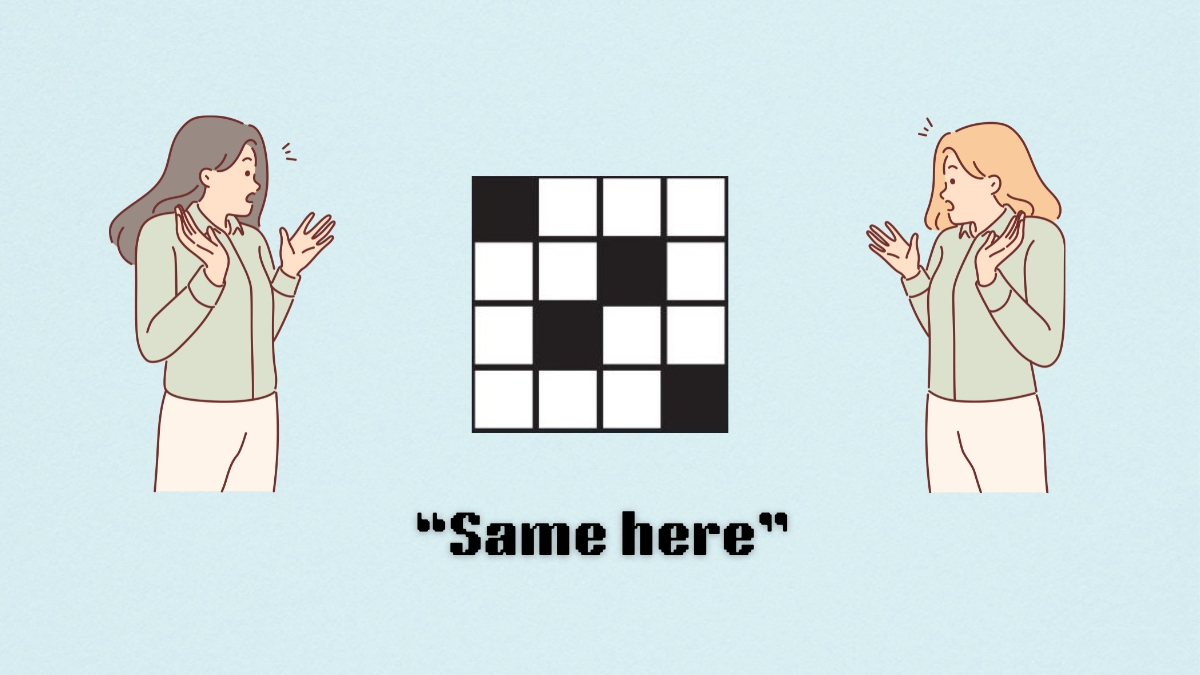
4. **”Here’s looking at you, kid” – Casablanca (Humphrey Bogart, 1942)**In the pantheon of classic cinema, Humphrey Bogart’s “Here’s looking at you, kid” from the 1942 classic “Casablanca” stands as one of the most beloved and endlessly quoted lines. What many fans might not realize is that this deeply authentic and charming declaration was not penned by the screenwriters but was an entirely spontaneous addition by Bogart himself, born from the heat of the moment during filming.
The line surfaces during a poignant exchange between Rick Blaine (Bogart) and Ilsa Lund (Ingrid Bergman), encapsulating the profound, yet bittersweet, nature of their enduring love and complicated history. Bogart’s improvisation added a layer of genuine human emotion and understated charm that perfectly defined his character’s laconic yet deeply feeling persona. It offered a window into Rick’s quiet devotion and the shared history between the two lovers without resorting to overly sentimental language.
The impact of this unscripted phrase cannot be overstated; it became a defining moment of “Casablanca,” symbolizing the film’s essence of lost love, sacrifice, and enduring memory. Bogart’s natural delivery and the palpable chemistry between him and Bergman allowed this seemingly simple ad-lib to resonate across generations, becoming an iconic piece of dialogue that highlights the power of an actor’s intuition to elevate a scene into cinematic immortality.
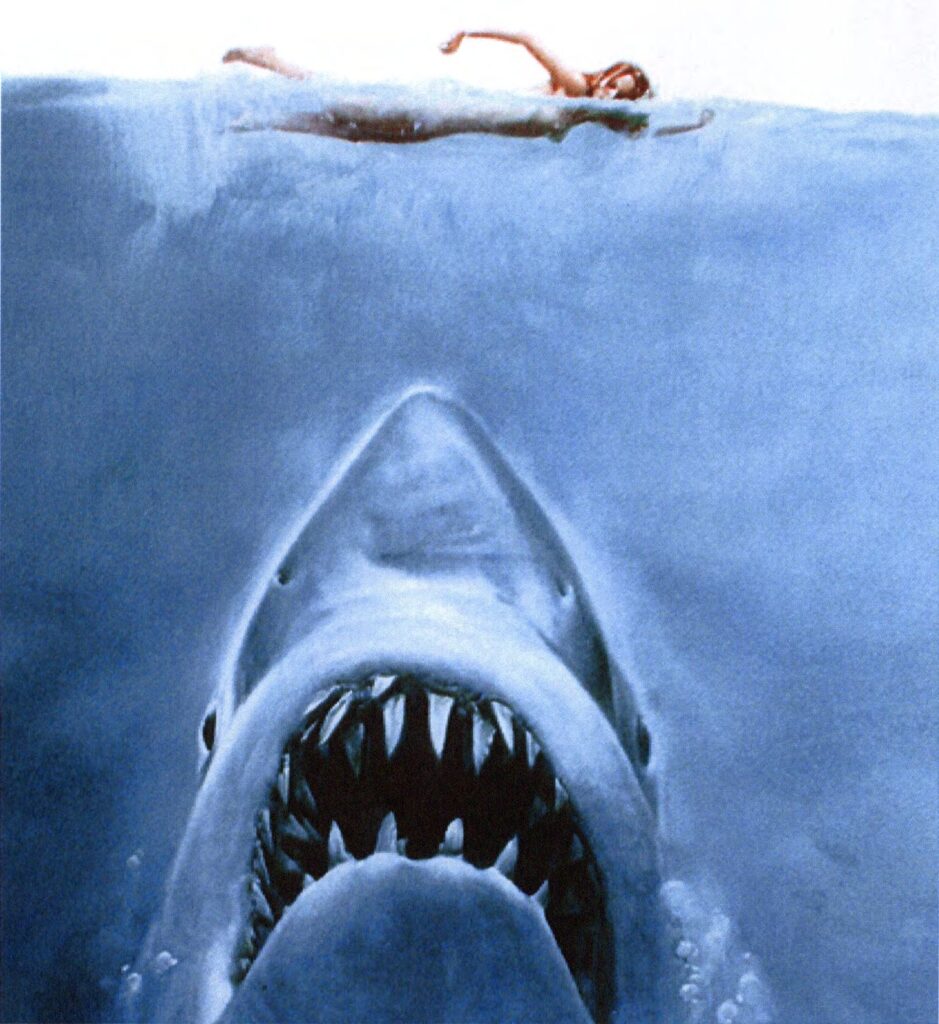
5. **”You’re gonna need a bigger boat” – Jaws (Roy Scheider, 1975)**When Chief Brody, played by Roy Scheider, famously mutters “You’re gonna need a bigger boat” after his harrowing first encounter with the monstrous great white shark in Steven Spielberg’s 1975 thriller “Jaws,” he delivers a line that instantly became one of cinema’s most iconic and quotable phrases. This perfect blend of shock, understatement, and grim humor was, in fact, an inspired improvisation by Scheider, not a pre-written piece of dialogue from the script.
The genius of the line lies in its timing and context. Brody, a man of practical police work, is suddenly confronted with a threat of unimaginable scale. His stunned expression and the casual yet profound observation perfectly amplify the tension and the overwhelming odds faced by the characters. The line cuts through the terror with a relatable, almost deadpan, realism that audiences instantly grasped and remembered.
Spielberg himself later revealed the amusing origin of the phrase: it was a recurring inside joke among the crew during the notoriously troubled production, often uttered whenever something went wrong or a larger piece of equipment was clearly needed. Scheider, brilliantly tapping into this on-set camaraderie, seamlessly incorporated it into his character’s stunned reaction. This off-the-cuff remark became a defining moment of “Jaws,” proving how a simple, improvised observation can enhance a film’s impact and etch itself into the fabric of popular culture forever.

6. **”Leave the gun. Take the cannoli.” – The Godfather (Richard S. Castellano, 1972)**Francis Ford Coppola’s “The Godfather” (1972) is replete with indelible scenes and quotable dialogue, yet one of its most chillingly pragmatic and memorable lines emerged from an unscripted moment. Richard S. Castellano, in his role as the loyal and pragmatic capo Peter Clemenza, delivered the now-iconic instruction: “Leave the gun. Take the cannoli.” This casual aside perfectly encapsulates the chilling blend of brutal violence and mundane domesticity that defines the mob lifestyle.
The line occurs during a pivotal scene following a murder, where Clemenza is instructing his associate. The script originally only called for him to ensure the murder weapon was left behind. However, Castellano, drawing upon his deep understanding of Clemenza’s character – a man who values both efficiency in crime and the simple comforts of home – added the instruction about the dessert for his wife. This spontaneous addition was a stroke of genius, immediately elevating the scene and the character.
Coppola’s genius lay in fostering an environment where such improvisation could flourish, allowing performances to feel natural and authentic. Castellano’s ad-lib not only enhanced the realism of the mob world but also provided a darkly humorous insight into Clemenza’s composed and pragmatic nature, even in the aftermath of a violent act. It remains one of “The Godfather’s” most celebrated quotes, a testament to how an actor’s intuition can profoundly enrich a character and a film’s narrative.
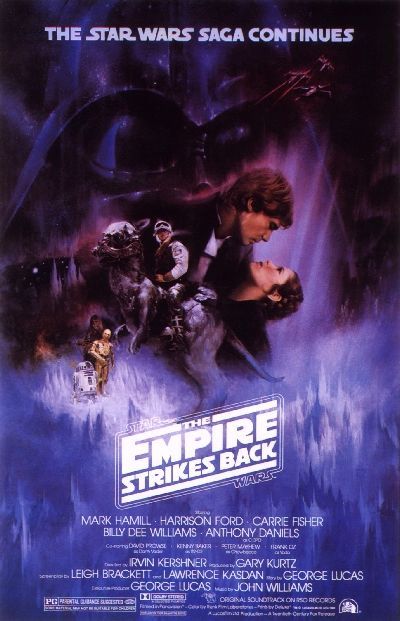
7. **”I know” – Star Wars: The Empire Strikes Back (Harrison Ford, 1980)**For countless “Star Wars” fans, the exchange between Princess Leia and Han Solo before he is frozen in carbonite in “The Empire Strikes Back” is one of the saga’s most poignant and character-defining moments. As Leia (Carrie Fisher) vulnerably confesses, “I love you,” Han Solo’s original scripted response was meant to be the reciprocal “I love you, too.” However, Harrison Ford, with his unparalleled grasp of Han’s roguish personality, felt this was entirely out of character.
Ford, ever the pragmatist and defiant hero, suggested an alternative that perfectly encapsulated Han Solo’s fearless, slightly aloof, yet undeniably charming persona: a simple, defiant “I know.” This inspired improvisation was a bold departure from the conventional romantic dialogue, yet it resonated deeply with audiences because it was so quintessentially Han. It solidified his image as a man too cool, too self-assured, and perhaps too emotionally guarded to deliver a straightforward romantic platitude, even in the face of imminent peril.
The directorial team wisely agreed to Ford’s suggestion, and the altered line made it into the final cut, becoming one of the most memorable moments in cinematic history. This instance vividly demonstrates Ford’s deep understanding of his character and his willingness to push creative boundaries for authenticity. “I know” has since become an iconic part of not just “Star Wars” lore, but of popular culture at large, illustrating how a small, unscripted change can significantly impact a character’s legacy and enrich an emotional scene with unexpected depth and truth.
Continuing our exploration of unscripted brilliance, we now turn to additional cinematic moments where actors, directors, and even unforeseen circumstances converged to produce unforgettable magic. These instances further solidify the notion that filmmaking, while often meticulously planned, thrives on the spontaneous creativity that breathes unexpected life into a story, creating legendary lines and performances that resonate deeply with audiences.

8. **”I’m ready to party” – Bridesmaids (Kristen Wiig, 2011)**Kristen Wiig, a true master of improvisation with a strong background in The Groundlings, absolutely outdid herself during the notoriously hilarious airplane sequence in Paul Feig’s 2011 hit comedy, *Bridesmaids*. As her character Annie experiences what can only be described as a drug-induced meltdown in front of the passengers, Wiig was given considerable free rein to explore the bounds of her comedic genius, resulting in some of the film’s most quoted and rewatchable moments.
The now-iconic delivery of “I’m ready to party!” stands as a crowning achievement of this scene, a line that transcended any scripted material and proved immeasurably funnier. What makes Wiig’s performance here particularly remarkable is the iterative process behind it. Co-star Mitch Silpa, who played the beleaguered flight attendant Steve (or ‘Stove,’ as Annie affectionately misnames him), revealed that the initial take adhered strictly to the script.
However, for each subsequent take, Wiig was encouraged to go “off-piste,” ensuring that every single iteration brought forth a new, unscripted gem. Silpa humorously recounted one take where he was astonished no one called “cut,” remembering how he picked up Kristen and carried her over his shoulder back to her seat – an entirely unplanned action born from the madness. Wiig’s spontaneous contributions included priceless lines such as Annie stating, “This should be open because it’s civil rights” and her bewildered inquiry to Steve, “Are you an appliance?” These ad-libs not only showcased Wiig’s improvisational prowess but also created an authentic, unpredictable comedic experience that audiences adored.
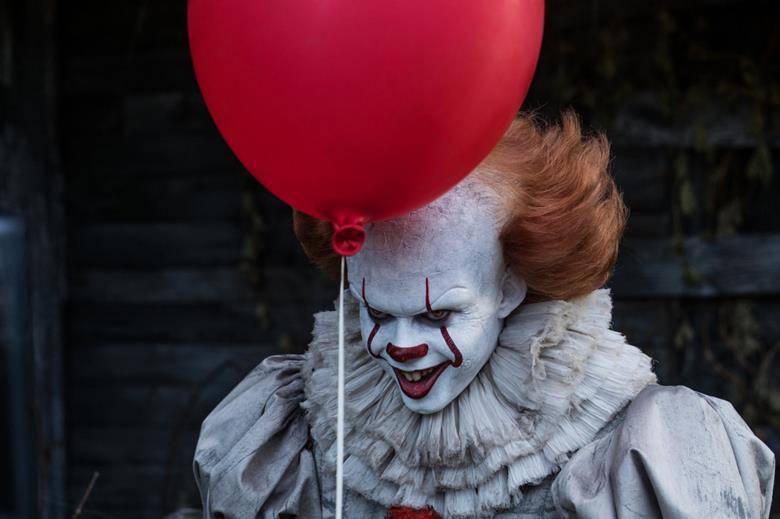
9. **”It’s not the end of the world” – Shaun of the Dead (Nick Frost, 2004)**Edgar Wright’s brilliant rom-zom-com, *Shaun of the Dead*, features a scene of such delightful, existential malaise and spontaneous humor that it feels more genuinely human than almost any finely honed scripted jokes. The moment sees Shaun (Simon Pegg) commiserating with his best friend Ed (Nick Frost) in their local pub, blissfully unaware of the impending zombie apocalypse. It is within this unassuming setup that Frost delivered an incredible, extended improvisation that firmly cemented the scene’s place in the improv Hall of Fame.
The comedic genius of the scene is amplified by the dramatic irony: Shaun has just been dumped by his girlfriend, who cites his lack of ambition as the reason. Ed, ever the loyal but somewhat clueless friend, attempts to cheer him up with the comforting, yet tragically ironic, assertion, “It’s not the end of the world.” This line, delivered just before their lives are irrevocably thrown into disarray by the undead, never fails to elicit a knowing smile from the audience.
However, the scene truly elevates to legendary status when Ed begins to invent bizarre, absurd, and wonderfully detailed backstories for the familiar regulars of their pub. The script merely required the pair to meet in the pub, but the substance of their conversation was left entirely to the improvisational talents of Simon Pegg and Nick Frost. Pegg’s uncontrollable, mischievous laughter in the scene is a direct result of this spontaneity; he genuinely had no idea what Frost would come up with next, a pure, unadulterated comedic magic that makes the moment unforgettable.
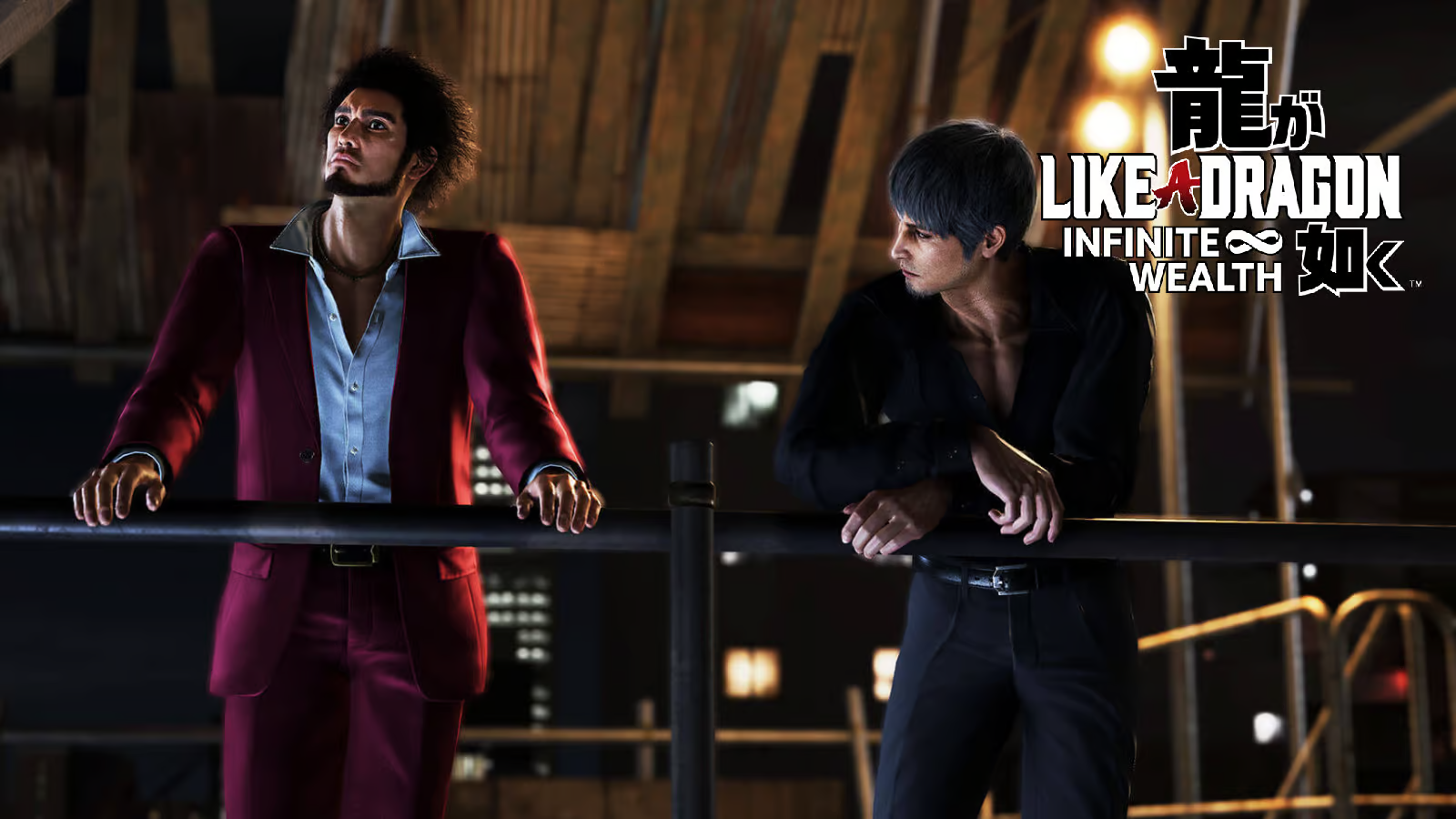
10. **”Like tears in rain” – Blade Runner (Rutger Hauer, 1982)**Rutger Hauer’s iconic “Like tears in rain” monologue in Ridley Scott’s 1982 neo-noir masterpiece, *Blade Runner*, stands as one of cinema’s most profoundly moving and celebrated improvised moments. While the speech originally had a scripted basis written by David Peoples, Hauer took it upon himself to make significant alterations during filming, injecting a deeply personal and poetic touch that transcended the written word.
Hauer’s improvisation was so subtle yet impactful that Director Ridley Scott and the screenwriters were reportedly unaware of the exact changes until the scene was actually filmed. The monologue unfolds near the film’s climax, as Roy Batty, Hauer’s complex and philosophical replicant character, delivers his dying reflections to Harrison Ford’s Deckard. Batty poignantly recounts his fleeting experiences and lost memories, comparing them to “tears in rain,” a powerful metaphor for the ephemeral nature of his existence.
The emotional weight of this altered speech was undeniable; it reportedly moved crew members to tears on set, a testament to its raw power and resonance. Hauer’s unscripted additions not only encapsulated Batty’s profound humanity and existential struggle but also imbued the film with an unexpected layer of pathos and philosophical depth. Even today, this monologue remains a powerful and memorable piece of film history, showcasing how an actor’s intuition can elevate a scene into an enduring work of art.

11. **”Take your stinking paws off me…” – Planet of the Apes (Charlton Heston, 1968)**Charlton Heston’s explosive declaration, “Take your stinking paws off me, you damn dirty ape!” from the 1968 classic *Planet of the Apes*, is undoubtedly one of cinema’s most recognizable and endlessly quoted lines. This raw, guttural outburst, delivered with visceral defiance, occurs when Heston’s character, astronaut George Taylor, is captured by intelligent apes on a bewildering new planet. It instantly encapsulates the film’s central tension and the profound shock of an inverted social order.
The power of this line lies not just in its memorable phrasing but in the sheer emotional intensity Heston brought to the scene, which was reportedly an improvised addition by the actor himself. His portrayal of outrage, bewilderment, and utter contempt in the face of his captors helped to anchor the scene’s place in cinematic history, driving home Taylor’s desperation and his visceral reaction to his predicament.
Heston’s spontaneous creativity added a significant layer of depth to the narrative, amplifying the film’s powerful critique of human and animal relationships, and societal hierarchies. His performance in this scene stands as a testament to the transformative impact of an actor’s intuition on the final product, demonstrating how an unscripted moment can brilliantly capture the essence of a character’s struggle and elevate a film’s lasting cultural footprint.
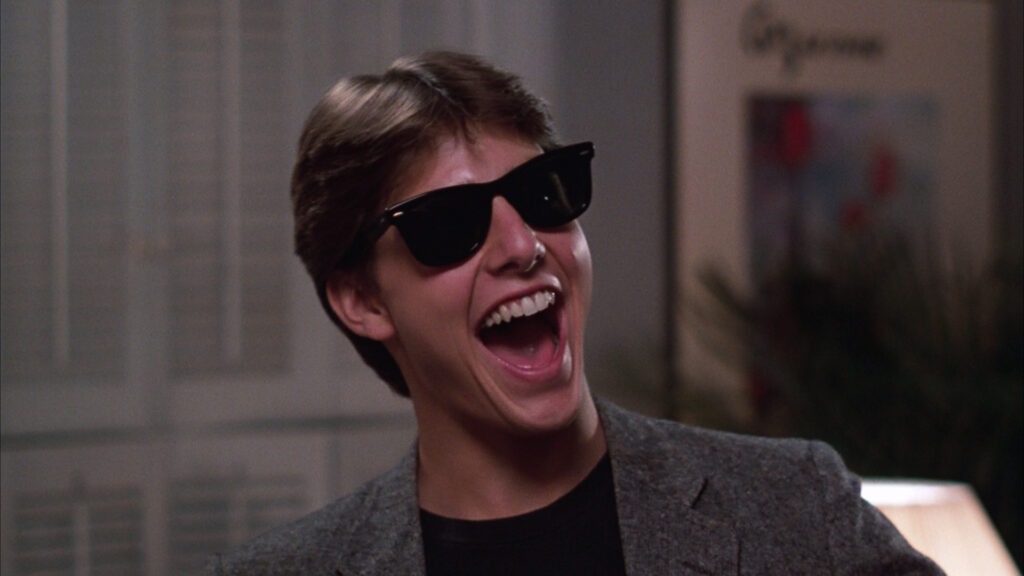
12. **Tom Cruise’s Dance in Risky Business (1983)**Tom Cruise’s electrifying dance sequence in *Risky Business* remains an indelible image in film history, instantly conjuring notions of youthful abandon and rebellious freedom. In Paul Brickman’s 1983 coming-of-age film, Cruise’s character, Joel Goodsen, slides across the living room floor in his underwear, enthusiastically lip-syncing and dancing to Bob Seger’s “Old Time Rock and Roll.” This iconic scene, a pure distillation of uninhibited joy and self-discovery, was largely improvised.
The scene’s enduring appeal stems from its authenticity; Cruise’s performance perfectly captures the spirit of the song and Joel’s moment of liberation from the strictures of his suburban life. It’s a spontaneous burst of energy that feels incredibly real, allowing audiences to connect with the character’s journey of breaking free. The visual of Cruise sliding in his socks and underwear has become a cultural touchstone, widely celebrated and frequently referenced across various media.
This impromptu act highlights the importance of allowing actors the space to explore their characters’ inner lives and express them in unexpected ways. Cruise’s willingness to embrace the unscripted moment, to simply *be* Joel Goodsen in that specific context, not only defined his character but also helped define a generation’s understanding of youthful exuberance in cinema, proving that sometimes the best choreography is no choreography at all.
Read more about: Then and Now: See What the Stars of Iconic 80s Movies Are Doing Today
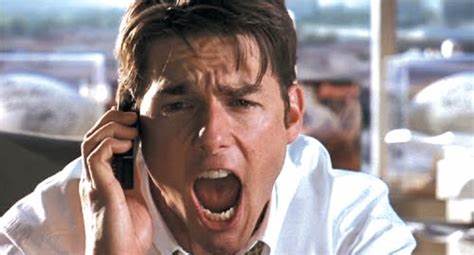
13. **”Show me the money!” – Jerry Maguire (Cuba Gooding Jr., 1996)**Cameron Crowe’s 1996 film *Jerry Maguire* is a powerhouse of memorable dialogue and impactful performances, but one particular line roared into the cultural lexicon with an undeniable, spontaneous energy. This iconic moment belongs to Cuba Gooding Jr., playing the flamboyant and demanding football player Rod Tidwell, during a pivotal phone call with his agent, Jerry Maguire (Tom Cruise). Gooding Jr.’s fervent demand, “Show me the money!”, was an electrifying, improvised outburst that instantly became synonymous with the film.
The line’s power comes from Gooding Jr.’s passionate and energetic delivery, perfectly capturing Tidwell’s frustrated yet determined spirit as he pushes his agent to prove his commitment. While the script undoubtedly laid the groundwork for this intense negotiation, Gooding Jr.’s decision to repeat and emphasize the phrase with such gusto was an unscripted flourish that cemented its legendary status. It wasn’t just a line; it was a rallying cry that encapsulated the high stakes of their professional and personal relationship.
Gooding Jr.’s dynamic portrayal of Tidwell, significantly enhanced by scenes like this, earned him a well-deserved Academy Award for Best Supporting Actor. This moment vividly illustrates how a spontaneous performance, infused with an actor’s deep understanding of their character, can significantly elevate a film’s impact, creating a phrase that transcends its cinematic origin to become a universal expression of demand and commitment.

14. **”You can’t handle the truth!” – A Few Good Men (Jack Nicholson, 1992)**In the pantheon of intense courtroom dramas, Rob Reiner’s 1992 film *A Few Good Men* delivered a line so powerful, so defiant, that it etched itself instantly into cinematic history. This line, “You can’t handle the truth!”, thundered from the lips of Jack Nicholson, portraying the formidable Colonel Nathan R. Jessep, during a climactic and highly charged interrogation by Lieutenant Daniel Kaffee (Tom Cruise). It’s a moment that underscores the film’s exploration of military ethics, personal responsibility, and the uncomfortable realities of power.
What many viewers might not realize is that this incendiary declaration, delivered with Nicholson’s signature blend of menace and charisma, was largely improvised. While Aaron Sorkin’s original script provided the framework for Jessep’s admission, Nicholson’s specific wording and the unhinged intensity with which he delivered it were his own additions. This brilliant improvisation layered Jessep’s character with an additional dimension of arrogant conviction and defiant self-preservation, turning a gripping exchange into an explosive, unforgettable confrontation.
The sheer force of Nicholson’s commanding presence, combined with the unscripted nature of the line, elevated the scene far beyond its written potential. It became a cultural touchstone, endlessly quoted and parodied, not just for its memorable words but for the raw, visceral emotion and unwavering conviction behind them. This scene stands as a testament to Nicholson’s legendary acting prowess and his ability to imbue a character with such authenticity and power that an improvised phrase can define an entire film.
The instances of improvisation explored in this article—from raw, visceral reactions to profound, character-defining declarations—underscore a vital truth about the art of filmmaking: sometimes, the most magical and enduring moments are those that aren’t meticulously planned, but rather spontaneously birthed from the collaborative genius of actors and directors alike. These unscripted gems don’t just add realism; they often become the beating heart of a scene, cementing their place in cinematic lore and showcasing the sheer, unbridled power of performance to transcend the written word and connect with audiences on a deeply authentic level. They remind us that true movie magic often lies in the beautiful, organized chaos of the moment, where chemistry truly is spontaneous.


